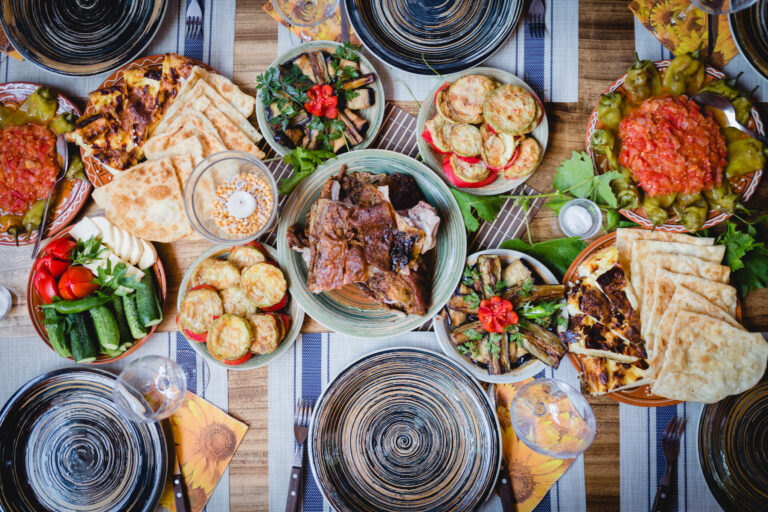Introduction: Understanding the History and Culture of Moldova
Moldova is a small landlocked country located in Eastern Europe, bordering Ukraine and Romania. The history of Moldova is steeped in different cultural and political influences that have had a significant impact on its food culture. The country was part of the Ottoman Empire, the Russian Empire, the Soviet Union, and Romania. As a result, Moldova’s cuisine is a reflection of its diverse history and cultural influences.
The Influences of Moldova’s Neighbors on Its Cuisine
Moldova’s cuisine has been heavily influenced by its neighbors, Romania and Ukraine. One of the most popular dishes in Moldovan cuisine is mamaliga, a type of polenta that originated in Romania. Another dish that has been influenced by Romania is sarmale, which consists of cabbage leaves stuffed with minced meat, rice, and spices. Ukraine has also left its mark on Moldovan cuisine in the form of varenyky, a type of dumpling filled with potatoes, cheese, or meat. The Ukrainian influence is also evident in Moldova’s use of sour cream and cottage cheese in many dishes.
The Impact of Soviet Rule on Moldovan Food
Moldova was part of the Soviet Union for over 50 years, and this had a significant impact on its food culture. During this time, the government encouraged the production and consumption of certain foods, which led to the standardization of Moldovan cuisine. One of the most popular dishes during Soviet times was plachie, a type of fish stew made with onions, tomatoes, and spices. The Soviet influence is also evident in Moldova’s use of canned and preserved foods, which were popular during times of food scarcity.
Traditional Moldovan Dishes and Their Significance
Traditional Moldovan cuisine is rich and flavorful, with a focus on using fresh and seasonal ingredients. One of the most iconic dishes in Moldovan cuisine is mititei, a type of grilled sausage made from beef, pork, and lamb. Another popular dish is zeama, a sour soup made with chicken or pork broth, vegetables, and sour cream. Sarmale, mentioned earlier, is also a traditional Moldovan dish that is served at weddings, funerals, and other special occasions.
The Role of Wine in Moldovan Food Culture
Wine has been an important part of Moldovan food culture for centuries. Moldova has a long and rich wine-making tradition, and the country is home to over 142 wineries. Wine is often served with meals, and it is considered a symbol of hospitality and generosity. The most popular types of wine in Moldova are red wines, such as Feteasca Neagra and Rara Neagra, and white wines, such as Feteasca Alba and Sauvignon Blanc.
Contemporary Moldovan Cuisine: Fusion and Innovation
Contemporary Moldovan cuisine has been influenced by globalization and the country’s growing tourism industry. Many chefs are experimenting with fusion cuisine, combining traditional Moldovan dishes with international flavors and techniques. Some popular examples include borsch with Asian spices and mamaliga with truffles. There has also been a focus on using local and organic ingredients, and many restaurants are promoting sustainable and responsible food practices. As Moldova continues to develop and grow, its food culture will undoubtedly continue to evolve and innovate.

